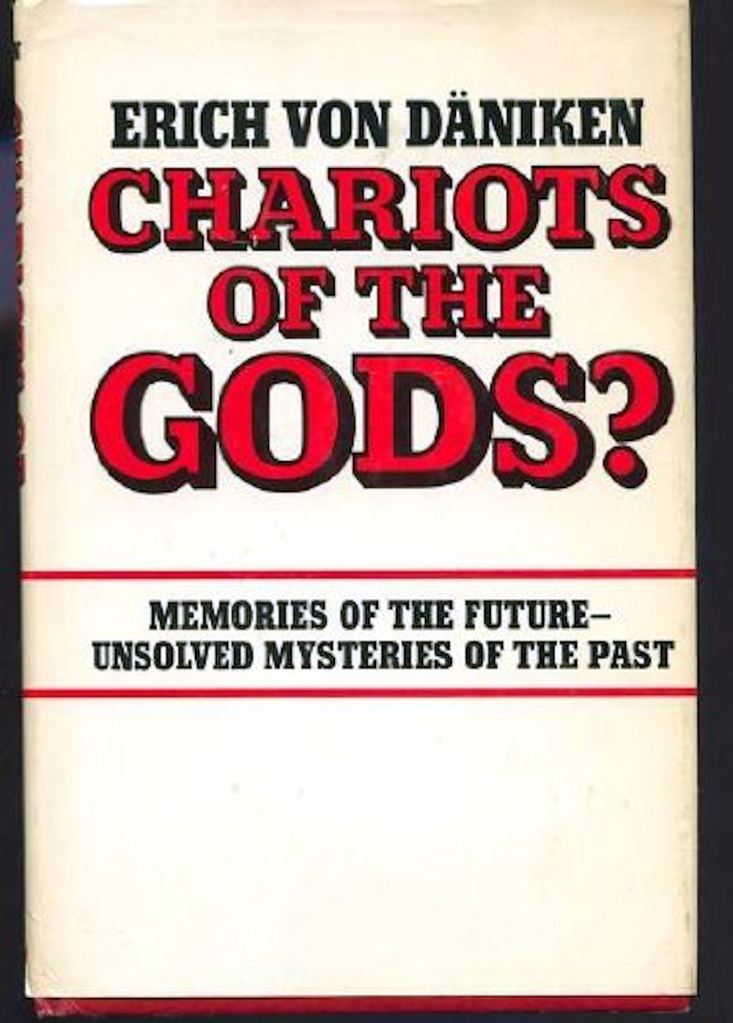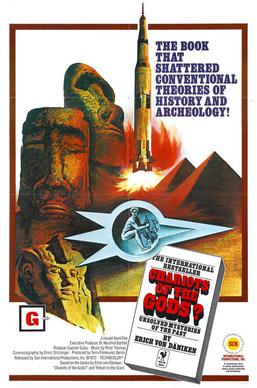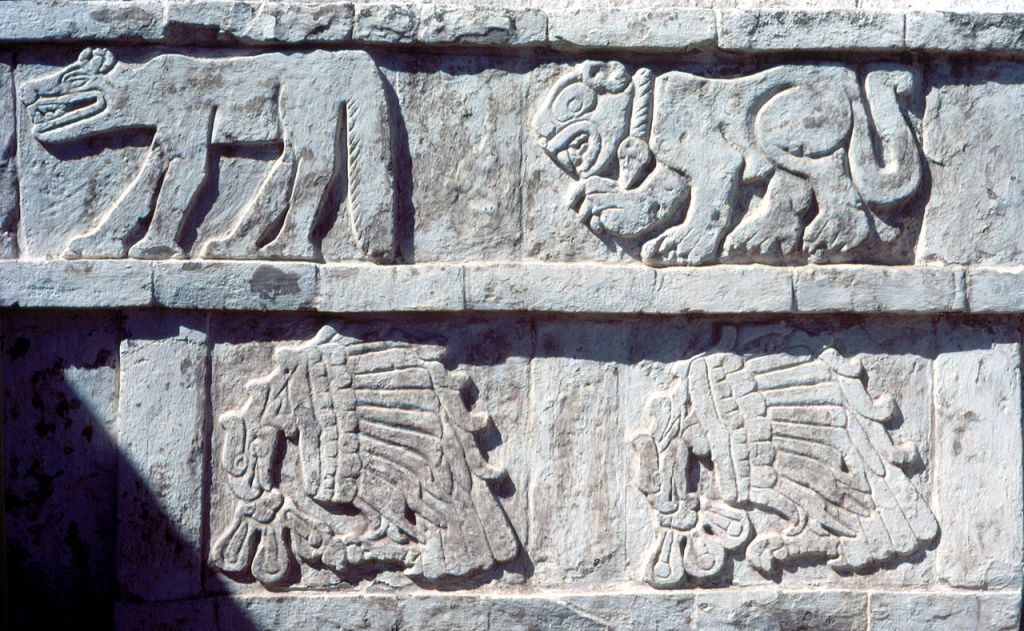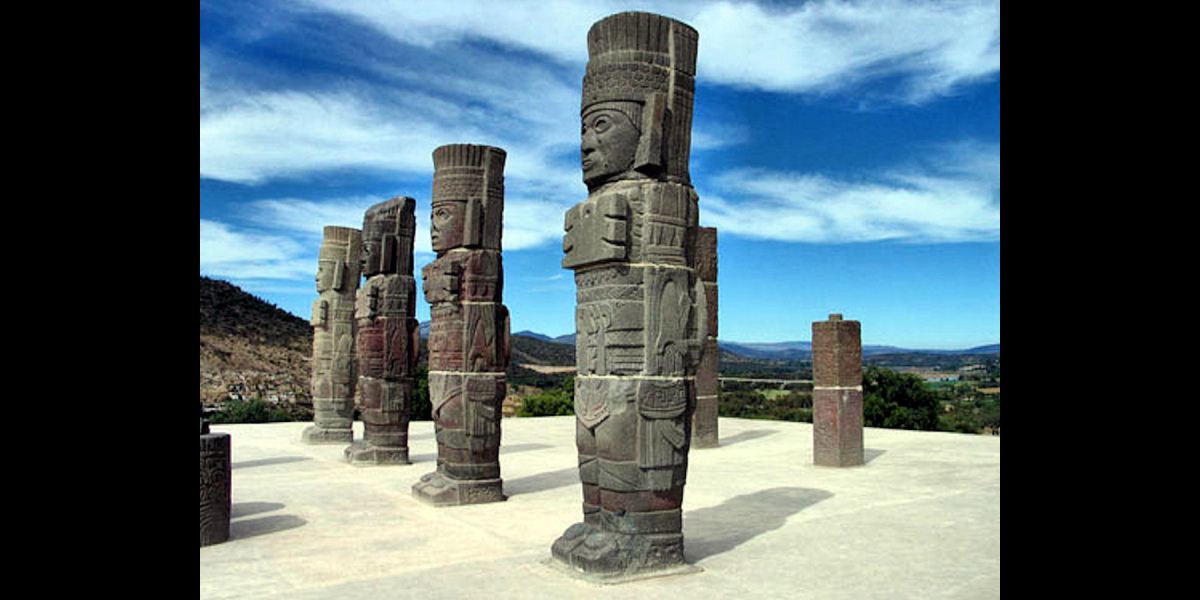by Richard L. Thornton, Architect & City Planner
Tula de Allende, Estado de Hidalgo – July 7, 1970
One Summer In Mexico – Part 22
The three articles on the Toltec People are being presented out of chronological sequence, because their capital, Tula, was actually the first large Pre-Columbian city that I visited outside of Mexico City. After Dr. Román Piña Chan showed me his book on the Toltecs then matched both artistic symbols and pottery between Tula and Moundville, Alabama, I wanted to immediately see Tula. However, for readers to fully understand Tula, it was necessary to publish articles on the civilizations that came before and after the Toltecs.
I have examined my journal from July 27 to Sept. 12, 1970. It will be impossible for me to adequately discuss all the archaeological sites visited during the same period in 2020. For example, today 50 years ago, I boarded a bus for Oaxaca, but have not even discussed several major sites in other parts of Mexico, which were visited in July. Therefore, the Mexico series will extend into Autumn 2020.
Origins, Ethnicity and Fate
If you really want to get confused, try looking up the word Toltecs in a reference. You are immediately told that their capital, Tula, was occupied from about 900 AD to 1150 AD and that the word means “Place of the Reeds.” (IT DOES NOT!) You then must wade through several paragraphs that summarize various theories presented by various academicians about the nature of the City of Tula. There are several more paragraphs with conflicting information about the identity of Quetzalcoatl.
You are never told where the Toltecs came from, what they looked like or where they went after Tula was abandoned. You are not told that Tula, the Acropolis at Ocmulgee National Historic Park and that a highly sophisticated alliance of towns connected by causeways and canals in South Florida all lasted from 900 AD to 1150 AD. You are certainly not told that Dr. Dr. Román Piña Chan, esteemed author of Los Toltecas, observed that both in Tula and Moundville, Alabama the people ate human stew from identically decorated mugs!
Etymology of the words, Tula, Toltec and Etowah
The etymology of Tula and Toltec, provided by Wikipedia and several anthropology books, printed in the United States, is absolutely wrong. The Gringo anthropologists keep on copying each other rather than examining the indigenous languages of Mexico. The false etymology described both as originally being “Aztec” words, when in fact Tula and Toltec predate the arrival of the Nahuatl speaking peoples to Central Mexico.
Tula became the word for town in Totonac, Itza Maya and Itsate Creek! It is derived from the Maya word for a type of architecture, involving the stacking of stones, taulum. Tauli is the Itza Maya, Itsate-Creek, Chickasaw and Choctaw word for stone. Talli means to plan or survey a town in Itza Maya and Itsate. A talliya was a Creek architect-surveyor.
Toltec is the Anglicization of the Spanish word Tolteca, which was derived from the Nahuatl word, toltecatl, which was derived from the Totonac word, tula-ch’izcu. It literally means “town dweller.” The same word in Creek is Tulase, which has been Anglicized to Tallasee.
Etowah is the Anglicization of the Muskogee Creek word Etalwa, which was derived from the Itza Maya and Itsate-Creek word, Etula. Etula means “Principal Town.”
Chariot of the Gods

Tula was a little known, off the beaten path, archaeological zone until Erich von Von Däniken published his best-selling book, Chariot of the Gods, in 1968. Since the 1968 Olympics were being held in Mexico City later that year, marketing for the book stressed Von Däniken’s statement that the large stone statues on top of the main pyramid at Tula was proof that extraterrestrials built the pyramidal temples in Mexico. The author interpreted the flint knives on the belts of Toltec soldiers as being ray guns. This resulted in hundreds of thousands of Olympic Games tourists visiting the ill-prepared archaeological zone.

Once the book’s popularity began to swell, no one questioned Von Von Däniken’s credentials. He was labeled a historian and archaeologist. Actually, he had no education past the senior year in high school and had a long criminal record, reaching back to age 18. In fact, in November of 1968, he was arrested for embezzling $130,000 from the hotel he managed, plus income tax fraud. He served yet another prison term, while the book’s sales made him wealthy – even after paying back his debts. Thus, by 1970, when I was in Mexico the first time, many tourists assumed that Tula was a space vehicle launching pad . . . as Mexico’s archaeologists rung their hands in disbelief.
As I was flying to Mexico in 1970, the MOVIE “Chariot of the Gods” was playing to packed theaters in Atlanta. It was a 1970 West German documentary film directed by Harald Reinl, dubbed or captioned in English. The movie was based on Erich von Däniken’s book, but didn’t happen to mention that he was in prison for fraud! The film was nominated for an Academy Award for Best Documentary Feature. It was the 9th highest grossing film of 1970. The film was edited and re-dubbed into English in a 1973 American TV documentary, “In Search of Ancient Astronauts,” narrated by Rod Serling. This version was also shown as a Science Documentary in many schools in the 1970s, distributed through 16 mm film prints.
“Chariot of the Gods” unleashed a legion of books and films, which got farther and farther away from reality. Most of them intertwined the Spanish (Christianized) version of the legend of Quetzalcoatl, with two kings named Quetzalcoatl at Tula and an assumption that Quetzalcoatl was Jesus Christ. The Toltecs were rebranded from being brutal warriors to being ascetic scholar-priests wearing white robes and having light complexions. In fact, the real Quetzalcoatl, if there was such a person, founded the first city in Mexico near Tepotztlan, Morelos in the vicinity of the year 1200 BC. At that location are found petroglyphs, typical of Bronze Age Ireland, Scotland, Scandinavia and northern Georgia, USA.
1970 academic version of the Toltecs

The most prevalent interpretation of the Toltecs in 1970 was that they were the first or one of the first Nahuatl tribes to invade central Mexico. Their demise was brought about by much more primitive Nahuatl-speaking tribes, who arrived in central Mexico around 1100 AD. There was no archaeological work to support a Nahua ethnic identity, just an assumption that since the Aztecs gave the Toltecs a Mexica (Nahuatl) name, they were Nahuatl.
Dr. Román Piña Chan was not quite sure of the ethnic identity of the Toltecs in his book, Los Toltecas. He gave lip service to the prevailing orthodoxy at that time, which assumed that the Toltecs were Nahuatl, but then suggested that perhaps refuges from Teotihuacan had founded a new capital at the site of a small village. Thus, the city contained a mixture of several ethnic groups like Teotihuacan.
When I was studying at the Museo Nacional de Antropologia both the exhibits and their accompanying literature made visitors quite aware that a vast tidal wave of Nahuatl tribes had swept down Mexico from what is now the western United States and northwestern Mexico around 1000 AD to 1250 AD. Some Nahuatl tribes reached as far as Honduras. However, no thought was given to the peoples, who had long lived in central Mexico before then. Apparently, the assumption was that they evaporated.
A new understanding of Mexico’s past
During the past 20 years, Mexican anthropologists and historians have become increasingly aware that the largest ethnic group in Central Mexico during the Classic Period (c. 200 AD-900 AD) was virtually exterminated by the Mexica (Aztecs) and their Nahuatl allies. For lack of a better term, they are called the Tolteca tribes by academicians. Physically, these people can be described as extremely tall, lanky and with long arms.
Mexican scholars are gradually learning the names of the tribes. For example, the tribal name for the region where the Kaushete Creeks came from was Tekesta . . . which is also the name of a tribe that settled in southern Florida. A few Tolteca tribes still remain in remote sections of Jalisco State, Mexico. These currently are being studied by sociologists and linguists.
Just from the words now coming out of these studies, that the Toltecas spoke a language similar to Choctaw or Itsate Creek. They seemed to have had a lot of shared words with the Western Mayas living in southern Mexico and the Totonacs in northern Veracruz State.

Howdy, ANOTHER GREAT ARTICLE!!! Not one to laugh at new ideas(vD)…I have long noted the curved arrows(darts) in the warriors left hands. What has always gotten my attention was the standing feather headdresses.
On Wed, Aug 5, 2020 at 7:44 PM The Americas Revealed wrote:
> alekmountain posted: ” by Richard L. Thornton, Architect & City Planner > Tula de Allende, Estado de Hidalgo – July 7, 1970 One Summer In Mexico – > Part 22 The three articles on the Toltec People are being presented out of > chronological sequence, because their capita” >
LikeLiked by 1 person
Standing feather head dresses were worn in Peru and by Apalache Creek nobility. It makes me think that the nobility of the Toltecs were Paracus people from Peru.
LikeLiked by 1 person
So a multi-ethnic migration up the Northern Gulf Coast Rivers, Apalachicola, Mobile Bay, Pcola, and the Panoan allies/lower class who became “Apalachinized*” by the Paracusa elite. Was the Panoan migration around the same time or separate? The “Apalache” migration legend states the landed in Savannah likely coming from Brazil. Were the Panoan commoners who became the Apalachicola Creeks already allies of the Paracusa prior to the migration and was it a joint journey from North Eastern South America? Or alternatively did the Apalache Elite migrate separately and their origins become tangled?
LikeLiked by 1 person
Richard, As Always Great informative article. The Toltecs with their allies the Itza built the Great road system into Georgia…that seemed to be passed on from the Para-kusa Micos. The Confitachi-ke also called the Carribs had set up a trade system as far as Colombia. They were called by the Spaniards “the most civilized” of the people they had met with “many things like Spain” (1540). This makes me think they were the old Carthaginians….and many of their Spainish tribes ended their names with the term “Tani”. HI-Tani-se river is a clear connection.
LikeLiked by 1 person
Well, all I can say is that I found the footprint of a Bronze Age Iberian temple beneath three large mounds near me and DNA Research Associates is finding both old and new Iberian DNA in the Creeks! By new, I mean “after Columbus’s voyages.”
LikeLiked by 1 person
Richard, That’s very clear proof. It seems to me both China, Sumer, Egypt (mastaba), Sardinia (One location), and the Eastern Natives Americans have one cultural connection in common: all built single layer flat top Earth mounds.
LikeLiked by 1 person
Curious about the Olmecs.
LikeLiked by 1 person
Thanks, Richard, for another enlightening, myth-busting post. You are absolutely correct that Toltec was a concept and multi-purpose descriptor. Sometimes it just means “civilized people, builder race, traders” sometimes it’s more specific as in the case of Tula. At the end of that phase, in 1325, there were only 20 noble Toltec families claiming descent from the first king, Quetzalcoatl (Israel III), still living. You are also right that all the books written about “The” Toltecs are inept. But Antiquarian Edward King, Viscount Kingsborough, wrote nine volumes of a lavish history of American Indians and among his conclusions was “the Toltecs were most probably Jews who had colonized America…” In my book Merchant Adventurer Kings of Rhoda: the Lost World of the Tucson Artifacts, the Latin inscriptions are shown to contain the earliest appearance of the word, which is rendered in Latin as Toltezus, “Toltecs.” This occurrence is securely dated 880 A.D. But usage of the word must go back to at least 560 A.D. The root element is the Egyptian concept of town, fertile fields, place of reeds.
The Roman-styled Toltecs are studied by Mexican anthropologists today as a broad movement of tribes up from Michoacan to the American Southwest called the Chalchiuites (Those of the Green Stone) or Toltec Chichimecs, which sounds like an oxymoron since Toltec means ciivlized, settled and Chichimeca means wild, barbarous, wandering. These Toltecs were mixed, speaking different languages, including Purepecha or Tarascan and ruled by international merchant families, who dominated the turquoise and minerals trade. If anyone thinks the Mexican Indians were dumb bunnies, here’s what I wrote on one page of the book:
Prayer to Tezcatlipoca
The Toltecs had a highly organized religion. Archeologists have mapped pilgrimage routes that extended from Michoacán and the Chalchihuites homeland in West Mexico to places in the American Southwest. They had epic legends, priestly orders, their own writing system and a great fondness for speech making on all occasions. George Kennedy, among others, has studied their rhetoric through Aztec continuances. There is no reason not to believe the Tucson Basin served as a vital hearth for cross-cultural influences between the Toltec Chichimeca and “Roman” peoples during the Pioneer Period of the Hohokam and beyond. The Toltecs’ homeland, described as Huehue Tlapallan, meaning “Old Red Land,” was evidently identical with the city of Rhoda and Red City to the South of the Hopis. Tlapallan was the original land of Quetzalcoatl, and the country to which he was urged to return before his death. After 900, the direction of the spread of civilization was reversed, taking Kokopelli, cliff dwellings and Quetzalcoatl back southward. The primitive Aztecs followed similar trading paths and met up with their more civilized Uto-Aztecan speaking predecessors and others in the Valley of Mexico around 1000. To help the reader imagine a depth of psychology and polish of manners incapable of being conveyed by the mute stones and petroglyphs and pottery sequences of archeology, here is one of the long, elegantly expressed prayers to the Toltec god Tezcatlipoca preserved verbatim by Sahagun in the sixteenth century. It was ritually spoken from on high by the chief priest with the people assembled and present and is titled “Prayer to Tezcatlipoca, Used by the Priest in Time of Pestilence.” Others, given at length by Bancroft and taken from the same source, include prayers of daily grace, in illness, for succor against poverty, for favor in wartime against the enemy, for a newly elected ruler, excommunication and to get rid of a ruler, confession and absolution and thanksgiving by a ruler. In language and style Toltec rhetoric and composition compare well with the Latin written during the Carolingian renaissance reviving Greek and Roman eloquence—or with that of the Hebrew Bible, for that matter. Consider, for instance, this prayer of the ruler giving thanks to Tezcatlipoca: “See good, O Lord, to give me a little light, though it be only as much as a fire-fly gives out, going about at night; to light me in this dream, in this life asleep that endures as for a day; where are many things to stumble at, many things to give occasion for laughing at one, many things like a rugged road that has to be gone over by leaps. All this has to happen in the position thou hast put me in, giving me thy seat and dignity (pp. 229-30).” We can imagine public prayers like this being offered in a Uto-Aztecan language similar to Pima/Papago or in the Purépecha language of the Tarascan colonists on Tumamoc Hill, in Snaketown, at the St. Mary’s Site, Hodges Ruin, Grewe/Casa Grande or at Chaco Canyon, as well as in La Quemada, Altavista, Cholula, Tula, Chalchihuites, Culiacán, Amapa, El Opeño, Casas Grandes or Guasave. The overtones with a Jewish synagogue prayer are striking. The implicit theology of One God is astonishing. Hubert Howe Bancroft, The Native Races: Myths and Languages (San Francisco: Bancroft, 1882), pp. 200-204; translated from the Spanish of Bernardino de Sahagun, who set down the prayer along with many others of great length from field research conducted with Nahuatl speakers in Tepeopulco, Hidalgo, about 1550, including it in his encyclopedic work Historia general de las cosas de la Nueva España (p. 132, n. 61).
LikeLike
Very interesting! I had no idea that you were into the Toltecs. I am focusing on the Toltec – Moundville connection because there is no doubt of shared artistic and cultural traditions.
LikeLike